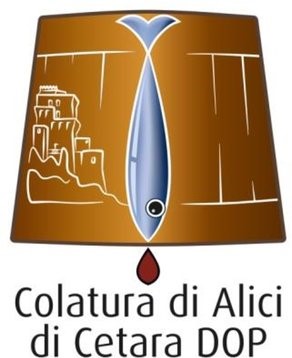[Food Law] In EU 41 new Geographical Indications in 2020

In 2020 the European Union approved the registration in the list of Protected Geographical Indication (PGI) or Protected Designation of Origin (PDO) of 41 new products from 13 different Countries.
Here a quick list:
1. Italia Pampepato di Terni / Panpepato di Terni 2. Italia Colatura di alici di Cetara 3. Spain Aceite de Ibiza / Oli d´Eivissa 4. Croatia Malostonska kamenica 5. Greece Ρόδι Ερμιόνης / Rodi Ermionis 6. Cyprus Χοιρομέρι Πιτσιλιάς / Hiromeri Pitsilias 7. Croatia Varaždinski klipič 8. Spain Pebre bord de Mallorca / Pimentón de Mallorca 9. Italia Olio lucano 10. Croatia Brački varenik 11. Hungary Akasztói szikiponty 12. Turkey Aydın Kestanesi 13. Italia Provola dei Nebrodi 14. Hungary Szilvásváradi pisztráng 15. France Berthoud 16. Greece Ελαιόλαδο Μάκρης / Elaiolado Makris 17. Poland Miód spadziowy z Beskidu Wyspowego 18. Romania Adamclisi 19. Italia Südtiroler Schüttelbrot / Schüttelbrot Alto Adige | 20. Italia delle Venezie / Beneških okolišev 21. Hungary Csopak / Csopaki 22. The Netherlands Achterhoek - Winterswijk 23. Italia Pecorino del Monte Poro 24. France Pomme de terre de Noirmoutier 25. Italia Mele del Trentino 26. France Brousse du Rove 27. Spain Aceite de Jaén 28. Poland Podpiwek kujawski 29. Spain Chozas Carrascal 30. Greece Φασόλια Κατταβιάς Ρόδου / Fasolia Kattavias Rodou / Λόπια Κατταβιάς Ρόδου / Lopia Kattavias Rodou 31. Italia Cappero delle Isole Eolie 32. Hungary Győr-Moson-Sopron megyei Csemege sajt 33. France Kiwi de Corse 34. Portugal Cereja do Fundão 35. Italia Amatriciana tradizionale 36. Spain Queso Castellano 37. Croatia Bjelovarski kvargl 38. France Huile d'olive de Provence 39. Norway Norsk Akevitt / Norsk Aquavit / Norsk Akvavit / Norwegian Aquavit 40. Norway Norsk Vodka / Norwegian Vodka 41. Greece Αρσενικό Νάξου / Arseniko Naxou |
You can check, but I can tell you that Italy leads the list with 10 new products, followed by France and Spain with 5, Croatia, Greece and Hungary with 4, Norway and Poland with 2 and Cyprus, Netherlands, Portugal, Romania and Turkey at the end with 1 product.No surprise then if I tell you something more about the first 2 products in the list (which are the last that received the registration in October 2020).

The first product listed in the register of protected geographical indications (PGI) of the EU is the 'Pampepato di Terni' or 'Panpepato di Terni'. Obtained from ingredients that could be put aside during the year (dried fruit, chocolate, raisins, candied fruit, bitter cocoa, honey, coffee, spices and flour), over time the product has become "the symbol of Terni's gastronomy during Christmas holidays", writes the EU Executive in a note.
 | ‘Panpepato (or Pampepato) di Terni’, which for centuries has been prepared with whatever was available from the rural economy during the year, is the Christmas cake par excellence. Over the course of time ‘Panpepato di Terni’ has come to represent Terni gastronomy during the Christmas festivities. The first reference to professional and ‘large-scale’ production of ‘Panpepato di Terni’ dates back to 1913, when it was promoted by a historical bakery in Terni as the Terni cake. During the course of the 20th century, and to this day, numerous books of traditional recipes, food and tourist guides and various types of publications have referred to ‘Panpepato di Terni’ as a typical local Christmas cake. |
The second Italian product listed in the register of protected designations of origin (PDO) is the "Colatura di alici di Cetara", in the province of Salerno.
"The Colatura di Alici di Cetara - the Commission recalls in a note - is a highly appreciated element in the gastronomy of all of Italy and, in many cases, this unique ingredient in the local cuisine of the Amalfi Coast has crossed national borders".
If you never heard about it before, no worries, neither I did. But the product is quite interesting. ‘Colatura di Alici di Cetara’ [anchovy drippings] is a liquid product obtained by fermenting anchovies in salt. Anchovy fishing has traditionally been carried out in many coastal locations in the province of Salerno, leading to the development of a distinctive and widespread skill in preparing and salting the anchovies, first within the families of the fishermen and then through the establishment of small workshops followed by medium-sized industrial undertakings.
 |  |
‘Colatura di Alici di Cetara’, even when produced in medium-sized undertakings, continues to be made with great craftsmanship, due to the skill of the local workers. One of the main skills is the ability of the workers in the area, predominantly women, to behead and gut the anchovies quickly and faultlessly. This is done exclusively by hand in order to ensure complete removal of the head and guts, the absence of which has a positive effect on the quality and the aroma and taste characteristics of ‘Colatura di Alici di Cetara’ as it prevents the development of any bitter notes. These activities are carried out immediately after the anchovies are caught so as avoiding freezing or long hours of storage in the refrigerator, which would cause the quality of the raw material to decline.
Moreover, the skill of the workers in preparing the traditional wooden barrels [terzigni] for salting the anchovies is also important. This is done exclusively by hand, with the anchovies and sea salt being arranged in alternate layers. Once all the layers have been arranged, a cover is placed on the container and weights are then applied to the cover to ensure that enough pressure is applied.
For centuries, the ‘Colatura di Alici di Cetara’ was not widely available and was found exclusively in the area of the Amalfi coast, in particular in Cetara, where, according to a well-established tradition, it forms the basis of Christmas Eve festivities where it is served with spaghetti or linguine pasta.
And talking about pasta, did you see the Amatriciana Tradizionale in the list? Next time I will give you the recipe as registered in the Traditional Specialties Guaranteed.
Silvia Marchi
HFG Law&Intellectual Property


